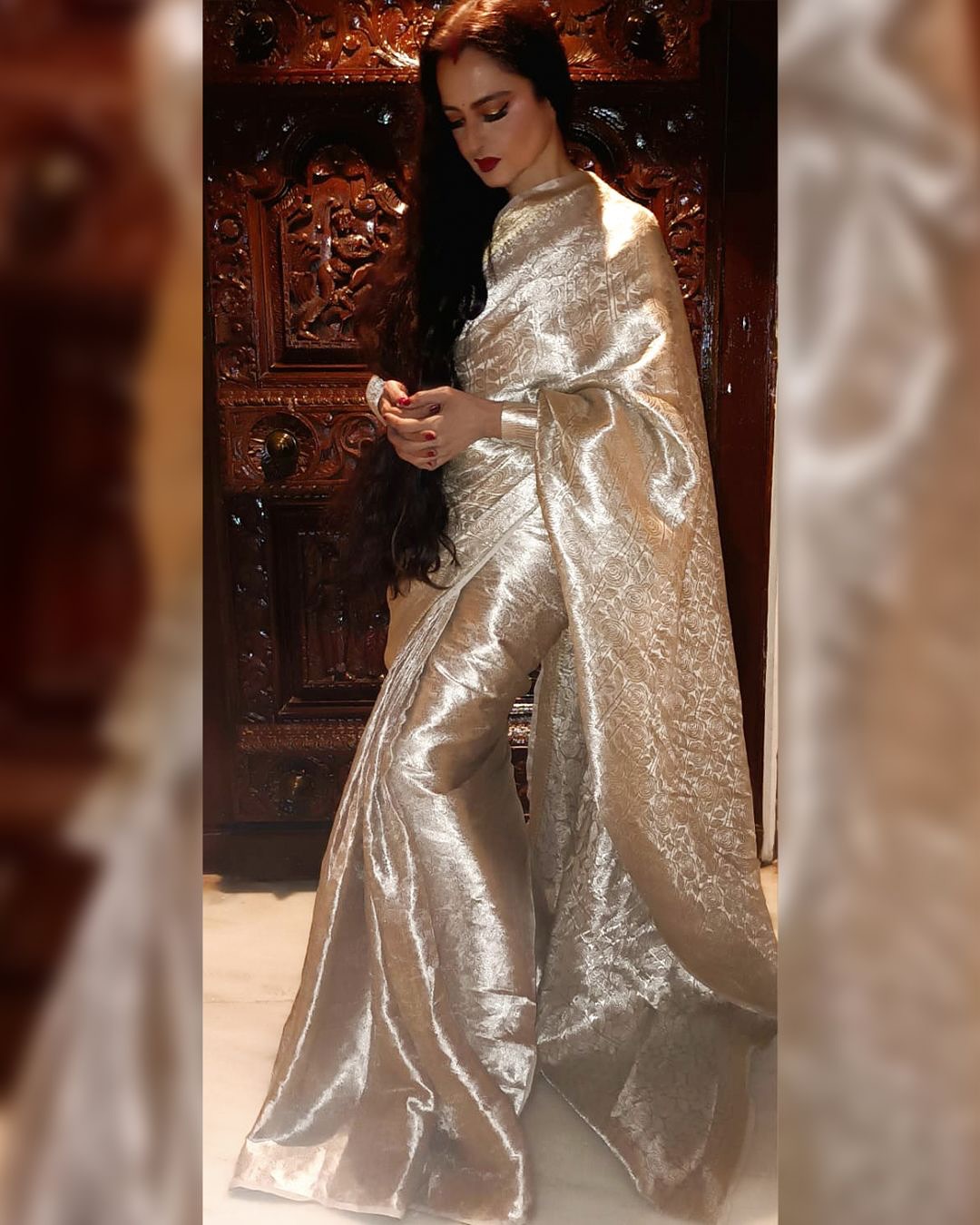Among the many fabrics that define India’s textile heritage, tissue stands out for its luminous sheen and delicate artistry. Known for its almost translucent appearance, tissue sarees have become a celebrity favourite and it is everywhere. From Janhvi Kapoor to the evergreen Rekha, every generation is in love with tissue sarees.
Here is all you need to know about the fabrice.
Origins of the tissue saree
The story of tissue sarees begins in Varanasi during the Mughal era. Here, skilled weavers experimented with fine silk and interwove it with gold and silver zari threads. The skilled artists made a translucent fabric that shimmered in candlelight—luxurious, delicate, and unmistakably royal.
Over time, this exquisite art form travelled southwards, finding new interpretations in weaving hubs such as Kanchipuram and Uppada. Each of these regions infused its own design sensibilities into tissue, blending local motifs and techniques.
By the 1940s, tissue sarees had become a bridal staple in northern India. Brides chose this light material over heavy ones. The sarees were surprisingly light and comfortable, making them ideal for long wedding rituals.
However, as weaving became more mechanised, the meticulous craftsmanship required to produce tissue gradually declined. What was once a common choice for brides is now a rare heirloom, passed down generations with immense pride.
Tissue saree: Symbol of opulence
Historically, the tissue fabric was more than just attire, it was a symbol of wealth and refinement. Its metallic sheen and fluid drape made it a mark of nobility, and it quickly became associated with grandeur. The poet-saint Kabir, in the 15th century, beautifully encapsulated this delicacy in his metaphor of the jhini chadariya, or the “finely woven cloth,” linking its fragility to the ephemeral nature of life.
The slow decay of pure tissue
Today, due to the high cost of production, Tissue sarees have become a rarity. Weaving them demands vast quantities of pure zari—first for the fabric’s base and then even more for its embellishments.
This makes the sarees prohibitively expensive and as a result, authentic tissue weaving has dwindled, with only a handful of master weavers still keeping the tradition alive.
Tissue saree: A celebrity favourite
Despite these challenges, tissue sarees continue to hold their ground in contemporary fashion. Celebrities such as Rekha, Madhuri Dixit, and Samantha Ruth Prabhu have been spotted draped in tissue sarees.
 Rekha in a tissue saree. (Image courtesy: IG:manishmalhotra05)
Rekha in a tissue saree. (Image courtesy: IG:manishmalhotra05)
Recently, the evergreen actress Rekha left everyone stunned after she donned a tissue saree designed by Manish Malhotra. For her appearance at the Filmfare Glamour And Style Awards, Rekha drew inspiration from her Umrao Jaan era.
Fashion designer Manish Malhotra reimagined her legendary silver tissue saree from the unforgettable song In Aankhon Ki Masti. The result was a gleaming silver embossed woven tissue saree, paired with a textured blouse in the same fabric.
Tissue sarees are more than garments; they are a reflection of India’s textile legacy. Would you buy a tissue saree this Navratri?






